Fostering my expertise in analyzing a literary piece of literature, I found my self noticing a huge difference between taking notes of a movie and a short story. Certain literary elements are really easy to identify in both but some are really hard. The note taking of two different means of exposing works creates The Battle of Sight. Let's break it down.
Movie:
While watching a movie the only thing I want is a big bowl of popcorn and dark environment so I can see every scene and detail of the movie. When you are taking notes of a movie, it's really easy to identify symbols, direct characterization and imagery because they are all done for you. A lot of people don't understand that in a movie, similar to how an author writing Literary Fiction chooses their words for a reason, so are the camera angles and sound effects in the scenes. A movie even adds a third dimension in the story that a written one does not. That is we the viewers get to see the character's body language and costumes. Finding characterization of a character in a movie is never hard. The only literary element that I have trouble with is Verbal Irony. During a movie, you are so engage in the story that you are trying deeply to understand the dialogue between characters but because you are so engage is that you forget their exact words. Unlike in a movie, you can copy the exact quotation of a story when you find verbal irony.
Story:
Now taking notes of a story has a lot of easily found literary elements. Since your eyes are viewing the exact words that paint the plot of the story, you get access to a level of the story that allows you to pick out the author's craft like uses of similes, alliteration, allusion, and metaphors. A story allows the reader to also be open to their own expectation and interpretation of symbols and characters. When our class does a group discussion, many people will have many different opinions because every mind makes you see the story differently than the person sitting in front of you. By taking away the visuals, you make the story your's and is force to make personal connection with everything in the story. This adds life. Whats really tough to notice while taking notes of a story is hidden body language and settings. Movies do a great job of making the story seem real and the setting is very important.
P.S Which kind of mean do you prefer?
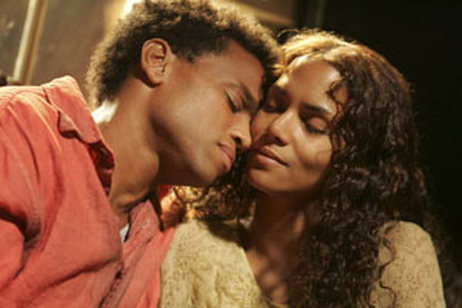 Their Eyes Were Watching God is about a strong woman named Jane Crawford who returns to her hometown, Eatonville. After traveling with one of her multiple husband across the country, she has to return because their relationship failed. She quickly become the topic of the town and Phoeby, a good friend, comes over for a visit. During her life, Jane married three different guys. The third one being the most symbolic because he was way younger than she was. Tea Cake builds a nice relationship with Jane but when a hurricane strikes, he is bitten by a dog and contracted rabies. Tea Cake eventually ends up going crazy and forces Jane to kill him.
Their Eyes Were Watching God is really unique for Zora Neale Hurston's use of diction and style. Jane and the characters around her all use a rural Black southern dialect. The whole movie is a flashback of Jane's life which is an example of Hurston's style and is used mostly to show the type of person Jane is. She is not a docile woman and likes to keep it that way. The most important symbol in the movie was Jane's wild curly hair that reflected the type of person she is. Her long locks meant that she had power and the fact she always wore it down means she is always free. There is an example of Dramatic Irony at the end where Tea Cake becomes paranoid of loosing Jane and forces her to kill him in self defense. Jane learned how to use a gun because Tea Cake himself taught her too. The theme of this story explores the differences between being independent and free and being married with commitments. Was it a questionable choice for Jane?
Jose.
It was while reading S.I Hayakawa's Language In Thought And Action at the beginning of the year that I became aware of the of the infinite possibilities of knowledge written language offers. When AP English Students got assigned to research the setting of an assigned literary work that I was stunned to find all sorts of information available. The idea of a time machine are words and when we research we time travel. My assigned works were "Miss Brill" by Katherine Mansfield and "Blue Highways" by William Least Heat-Moon.
"Miss Brill" is set in France during the 1920's, a time where women were wearing shorter dresses and hair. This time was full of provocative jazz music and this kind of information is important to know. How could anyone understand that story fully if we don't understand how society influenced the character?
Albeit, "Blue Highways" by William Least Heat-Moon was set in the US during the late 1970's. The 1970s were a time period of many different activities. The plot of the story is William, himself, takes a road trip around the country and meets all sorts of people. Theses people were living in a time when the US was in the Cold War and many dangerous serial killers were finally captured.
I was really shocked to find this kind of detail that lies behind the story and the only way I know about it because someone decided to write it down. The Pooling of Knowledge.
Jose.
Some may say the best tool to compare stories is by using a Venn Diagram, but I say the best way to analyze a story is to use 4 Corner Notes. The first time I was introduced to this note taking breakthrough I was skeptical and, frankly, irritated because the name is a false advertisement. The way that four corner notes works is by folding your paper both hot dog and hamburger style creating four corners on one side of the paper. At the top of the four corners you write the specific elements you are trying to find and when you catch them you jot them down. Here's the false advertisement you have 4 more corners on the other side so the name becomes misleading. Now I may sound like I think having 8 corners is bad but I have a flexuous attitude towards it. Most of the time I really like it because it helps me understand the story better. I'm hoping to reach a level of analyzing that allows me to do this four corners all in my head. The only way is through practice. As of now, my note taking style while analyzing a story in college will be four corners.
P.S the US has four states that create perfectly four corners. Can you guess which ones?
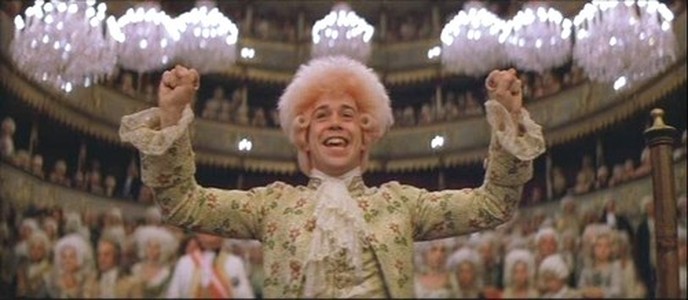 The movie of Amadeus is probably my favorite movie we have watched so far! Truly a masterpiece. The movie takes the viewer to the journey of a music composer, Antonio Salieri, who wishes nothing more than to please God through his music. As a child, Salieri was mocked for wanting to be a composer and that had a great impact on his goals. Since he experienced deprivation as a child, he has grown with a great passion of not letting anyone come in his way, not even the uber-talented Wolfgang Amadeus Mozart. Unlike Salieri, Mozart was always supported by his parents to pursue a music career. Mozart toured Europe with his father and perform his compositions to all sorts of social elites like Kings and Queens. Everytime Salieri would compose a symphony, Mozart would out do him. Even though Mozart never compared himself to anyone else, Salieri grew this big obsession to Mozart that sometimes fuses both admiration and jealousy.
I had the most fun analyzing this movie. There are just so many examples of literary elements. There are examples of verbal irony such as when Salieri describes his father's death as a miracle of God, or when Katerina Cavaleria says she is happy that Constanze Mother is not on the floor dead. Examples of symbolism and Characterization are endless in this movie. Salieri composes his melodies in a piano whose black and white keys are inverted in color representing his twisted relationship to music. Mozart on the other hand composes on a normal piano and usually wears bright colors that reflect his love and happiness to music. The characterization of the Salieri and Mozart reminded me of the traits between the main characters in Black Swan, Lilly and Nina.
What I loved about the movie was how it depicted the amount of hard work artists go through to create art. In Mozart's case, his love for music leads him to a dark road. He is literally killed by music even though he enjoyed it. There is a famous adage that says an artist's joy never comes from the process the artist takes to create his works. This movie support this beautifully and I myself has sometimes undergone experiences in which my love for something makes me undergo a stressing process that's not enjoyable but creates a Mona Lisa. Many actors today, such as the actresses of Black Swan, went through painful experiences just to portray their characters well. I just think its very artistic and there are just a few movies who show this process.
P.S Do you agree that an Artist's joy never comes from the process of creating his art?
Jose.
The classic Gothic tale of The Legend Of Sleepy Hollow by Washington Irving is probably the most known horror story ever. Everyone is familiar with the man who takes the head of people because he lost his own. I never really payed much attention to analyzing this story until I seen the movie version with Johnny Depp. The story is filled with symbolism such as the tree which the headless Horseman comes out of. This is kind of an ironic symbolism because tress usually represent life and in this movie represents the home of death. Another striking symbol is the story is the red cardinal on a circle that makes the illusion its being trapped in a cage when you hold the string in opposite directions. The red cardinal is symbolic of the setting. Red cardinals creates a vivid view when they are found in a forest with dead trees and white snow that contrasts the fiery red. Cardinals represent something alive and the fact that its in a cage means that Ichaban Crane must unleash the truth that is kept inside the town of Sleepy Hollow. The ultimate theme is the truth can not be harnessed and will always find a way to make justice to those who deserve it.
P.S The level of comedy relief in the movie brought by Johnny Depp is just the right amount that perfectly makes the movie more family-friendly while at the same time avoids ridiculing the story. Well done!
Jose.
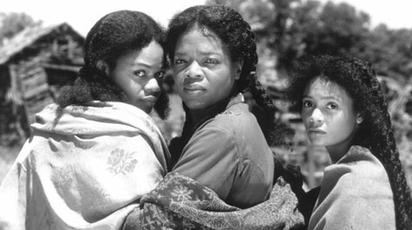 Beloved, the very crude and rough movie based the novel by Toni Morrison, is about a woman named Sethe who attempted to kill her own children in order to secure their freedom from slavery. Sethe hits her two sons with a shovel on top of their head and cuts the throat of her baby with a saw like knife. The reality of the situation was Sethe had only momentarily knocked out her sons and only actually killed the new born baby while she was pregnant. As time progresses, the house in which Sethe and her only surviving daughter lives in haunted by her daughter that she killed. The plot gets more intense when Beloved comes back to life and undermines Sethe's emotional health and leads herself to a self-destrcution.
Toni Morrison is exploring the idea that self forgiveness can eradicate any mistake in your past. Sethe, wanting to do good, ends up doing a terrible mistake in order to guarantee freedom. This was a major issue that affected many African American after slavery. If this movie is analyzed with Maslow's Hierarchy of Needs, the basic level of protection was threaten by the possibility of returning as a slave to Sweet Home. Her train of thought was hindered and as result her Locus of Control was lost. Sethe has to find a way to forgive herself about what she did and to forgive society for putting many African Americans through slavery. Now her daughter undergoes the traumatic experience of seeing her sister once thought to be dead to now being a parasite in Sethe's life. The relationship between Sethe and her daughter hits one of the themes of the power and fragility a daughter-mother relationship has.
P.S Would you ever consider Sethe actions as one you would make?
Jose.
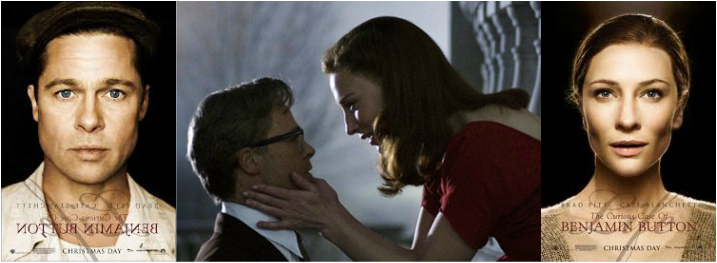 The Curious Case Of Benjamin Button was really touching movie that brings to life of a time defying person known as Benjamin Button. Based and named on the 1922 short story by F. Scott Fitzgerald, Benjamin Button was born with a health condition that makes him age backwards. Benjamin was born on a day in which World War I had ended and while people on the streets were happy Benjamin's Father was the exact opposite when he saw his son was born with the physical features of an old man. Outraged and angry, he takes the new born and drops it off at the front door of Queenie, a woman who takes Benjamin as her own son. The plot of the movie focuses of the conflicts Benjamin has because he does not fit into the normal expectations of a baby. While still keeping his unique condition a secret, he is able to mature in a more quicker way than a teenager would therefore exposing the viewers into a new level of understanding when it comes to time.
The movie was filled with examples of many literary elements. At the start of the movie, the first symbol one notices is the clock that works backwards purposely made by a blind man who lost his son to the war. The specific situation of this man are symbolic of Benjamin's reverse aging, as time goes forwards he becomes younger, and the loss of Benjamin's Father of his son to the internal war within himself of accepting his own son. As the movie progresses, the viewer knows right away that Benjamin is a developing character. Benjamin can even be analyzed with sociological concepts like the Locus of Control Theory, finding where he has control of his decisions, and the progression he makes through Maslow's Hierarchy of Needs, starting with the basic level of love and shelter provided by Queene to the self realization that was highlighted by the love of his life Daisy. With each age he turns, he learns something new. The movie's main themes are identity is heavily influenced by age and time and love will over come any social barrier. It is a great movie with many motifs, conflicts, and experiences that all shows Benjamin's situational irony beautifully.
Would you ever fall in love with someone aging backwards?
Jose.
On the last repeating date ever in history, it's not everyone that will describe that day as one they got to be part of something special. I myself is excluded from that crowd and is overjoyed to remember that date as The GLPP Career Day. Dressing up in fancy clothes and giving firm hand shakes were just a few perks of being one of the many great hosts of the event. Along with Cesia, I got to talk to the wonderful Radio DJ and personality of Flint's Classic Rock Radio, Elissa Alexander. She came to the school to share with others the journey she went through to be a Radio DJ.
As a teenager, Elissa knew that her passion was in found in music. She wanted to have a job involved in Broadcasts Arts, her true passion. She felt that main inner drive within yourself and passion for what you do will make the difference between a job and a career. While attending a school for Culinary Arts, she realized that she shouldn't be afraid of her dream to be a Radio DJ so with her awesome support team (that included Mrs. McMurray) lifted her courage and helped her reached her dream.
After graduating a rigorous Radio training program at Specs Howard School of Broadcast Arts, she worked twice as hard as an intern for Flint's Classic Rock Radio until she was offered (which is a really big deal) the position of being a DJ/Personality. She got the chance to meet many famous people and now has a show on the radio that is hosted only by Elissa's entertaining voice. Elissa's story was really inspirational because she decided to go with what made her happy and not by what society pressured her to be. Just goes to show, how far you can go if you let go of your fears. I feel really honored to have been part of the last GLPP Career Day of Ypsilanti High School and to have met Elissa. I will never forget her.
Jose.
|
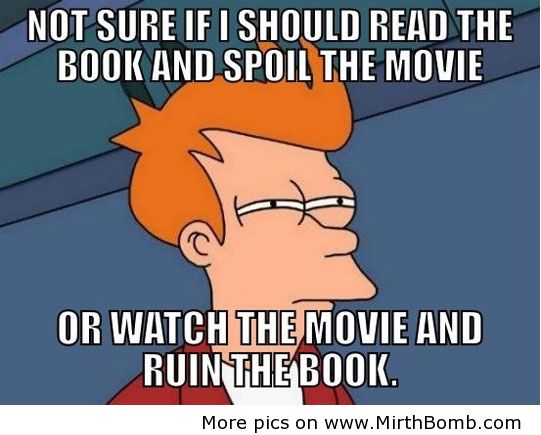

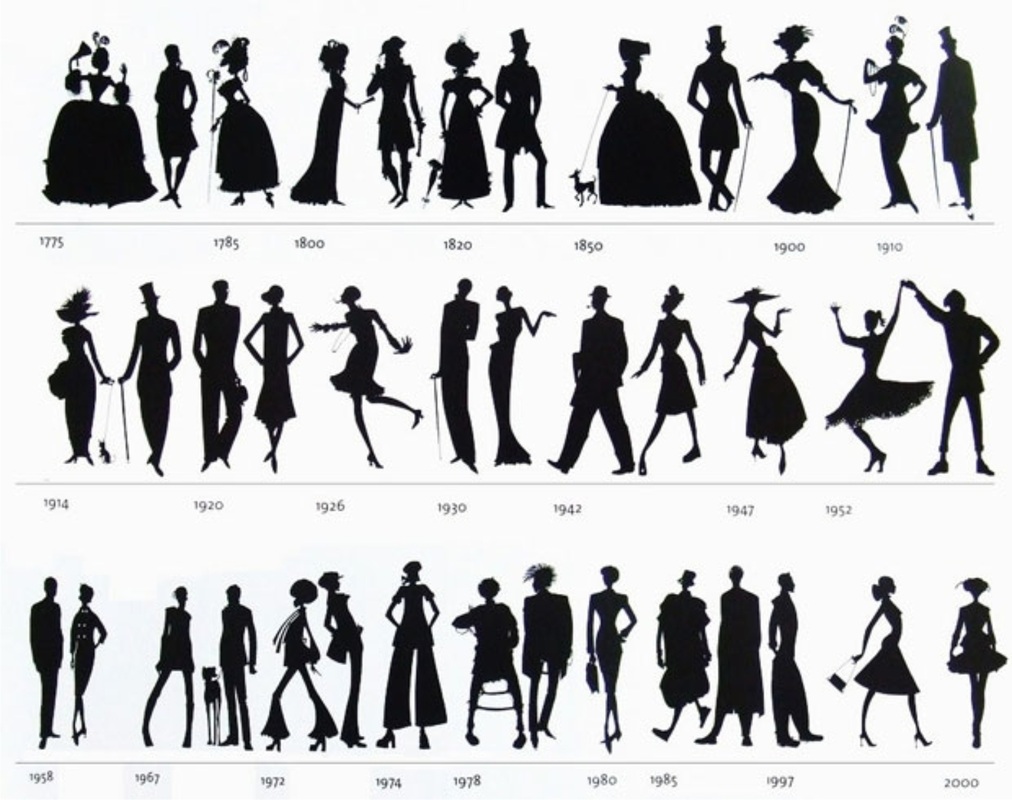


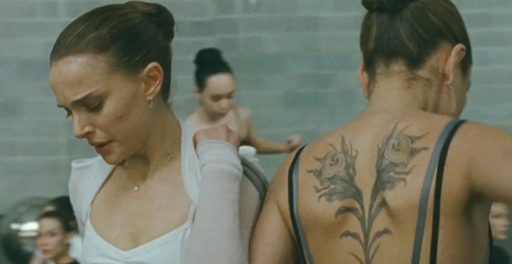




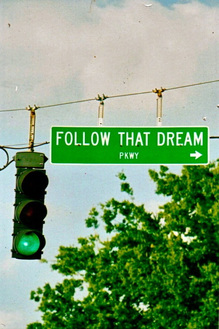
 RSS Feed
RSS Feed